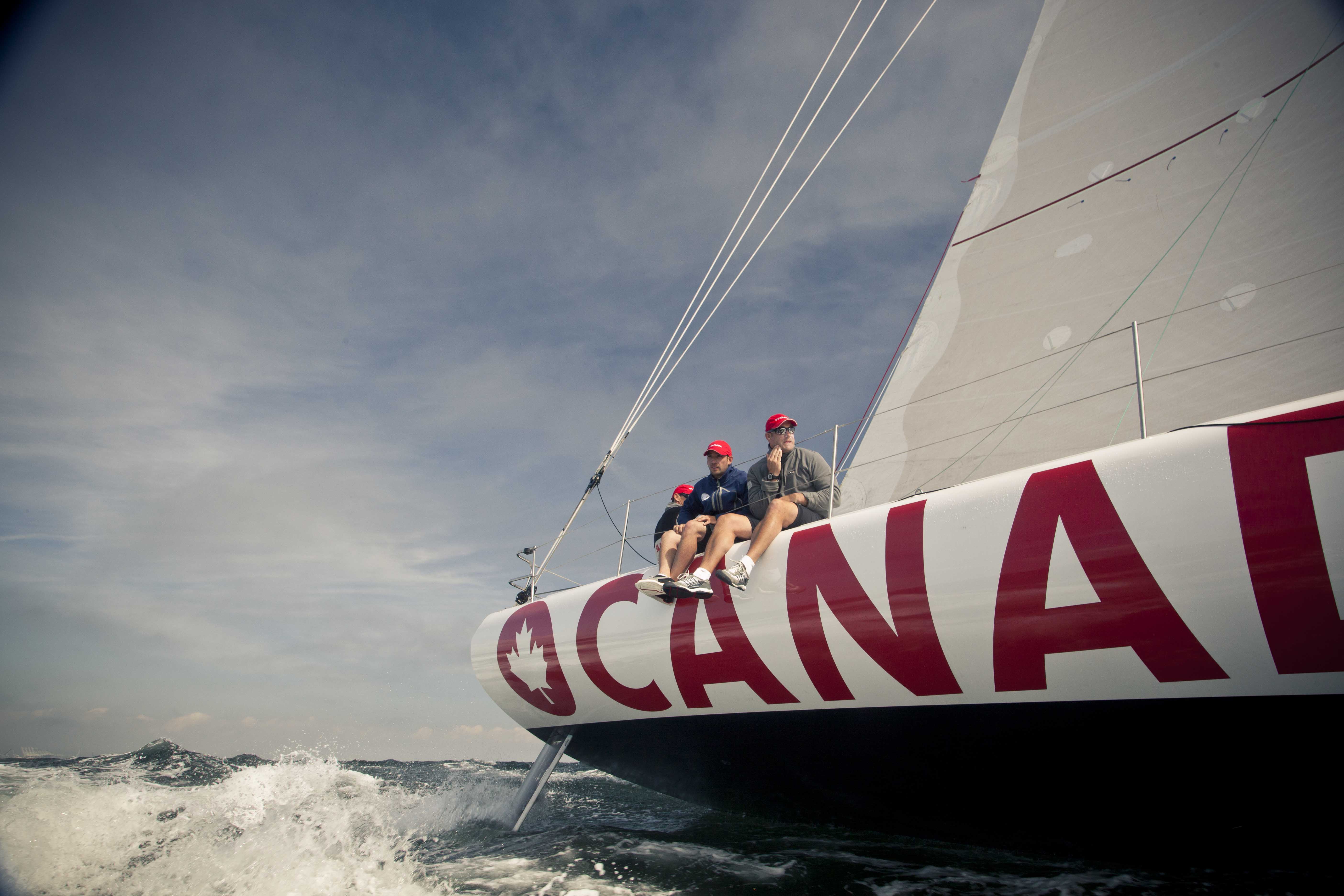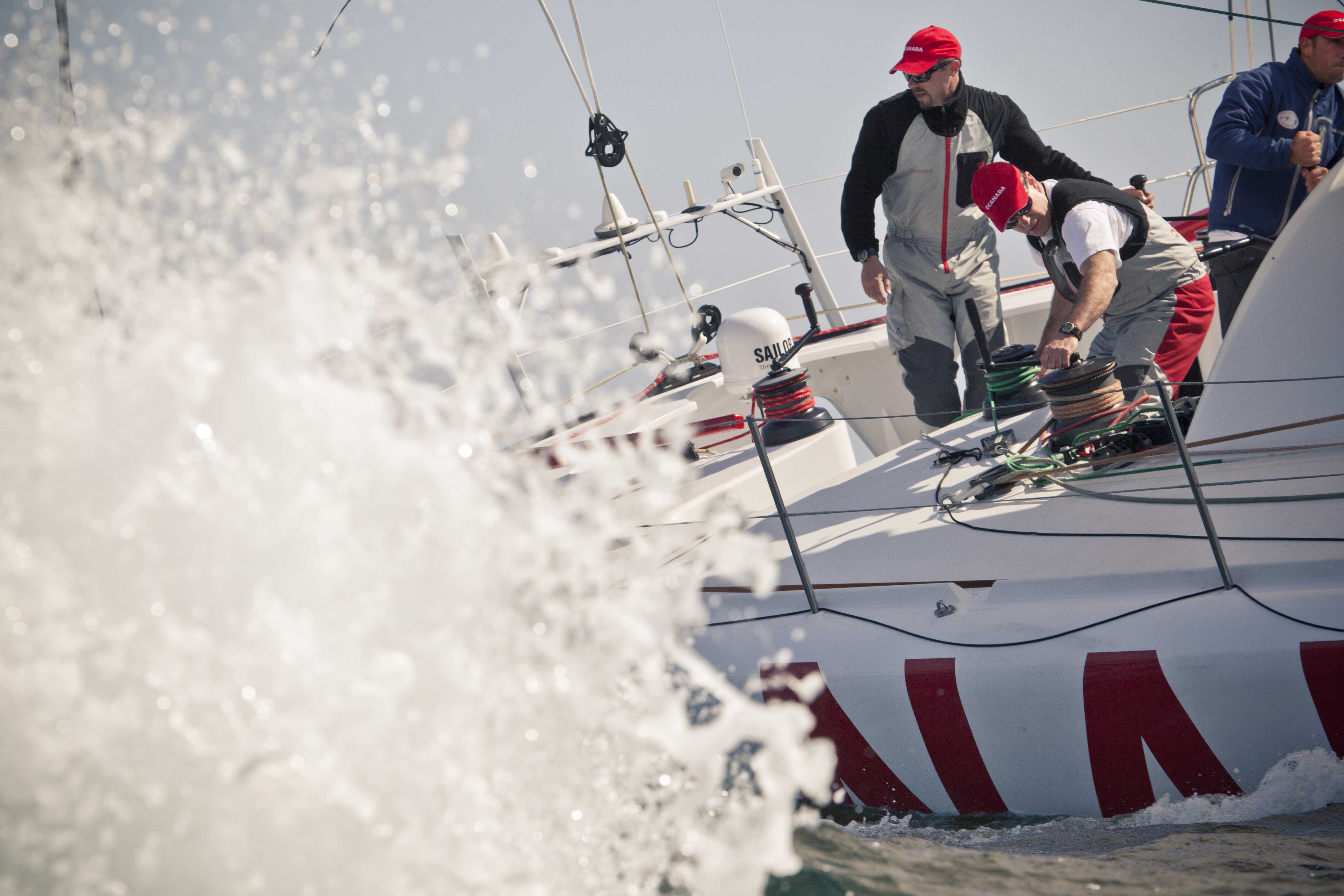

I am a great believer in keeping things as simple as possible. In our modern information age this is not a simple thing to do. Even alone out at sea the Vendee Globe skippers are being bombarded with information. I hope for their sakes they are also experiencing that wonderful mind calming affect of being at sea. Its a rare and magical thing to have one's mind clear of clutter. I recall day 4 of the 2011 Transpac Ocean Race aboard the Open 60 O CANADA, when I suddenly noticed that all the thought noise in my head had stopped. I was on deck between watches. It was morning and the sun had finally broken through the clouds. I had a camera in my hand because we were making a film about the race and I described the feeling to the camera while filming the water rush past the deck. It was magical. My thoughts were ordered and deliberate. There were no interruptions. Finishing a thought was easy and my perceptions felt clear and free of doubt. I would love to find that place again. here is a link to the film that should be available soon. www.sailingaroundtheworld.tv You can watch the trailers for the 2 films about this adventure. They are called The California Campaign and The Transpac.
I'm sure many of the Vendee skippers are having their doubts about their ability to predict what will happen next with the weather but there is some simple logic that they should be trying to follow.
Essentially they have two ways to make progress. They can go for speed or try to sail the shortest route to the next way point. A way point is sometimes a mark, tip of a continent, an ice gate and sometimes an imaginary point that gets them to where they think they need to be at a certain point in the race. If you race small boats think of a way point like a mark of the race.
The thing that is most noticeable about these fast boats is the extent to which extra speed can compensate for sailing extra distance. This usually means that finding more wind is the primary concern and they will be willing to go surprisingly far out of their way to get to that stronger wind. Anyone who sails catamarans will know what I am talking about.
They also have to factor in points of sail. No one wants to sail a close hauled course in heavy weather and big seas. Reaching or running is much faster in big wind so they are aiming to be reaching or running in the big stuff.
When the wind is light, it is usually better to sail angles that are closer to the wind (close hauled or close reach). This is because the apparent wind is stronger in light winds if you are travelling in a direction that is close to being the opposite direction from the true wind. The True wind and boat wind add to create apparent wind. (its high school geometry at work in the real world and it is more elegant and wonderful than they ever taught us in school).
This changes when the wind reaches a velocity where the boat can generate more apparent wind on broader angles. in an Open 60 this is about 6-8 knots of true wind. In 6 knots of true wind sailing about 20 degrees off a close hauled course with the full main and a Code 0 (ginormous jib flown off the bow sprit) the boat will do about 10-12 knots depending on the sea state. 10-12 knots over the bottom in 6 knots of wind. Sounds like cheating mother nature and it feels like that to. Its awesome!
The other thing is that there will be times in the race where there is no escape from the light wind. The St. Hellena that the fleet just went through is usually such a spot. In that situation they want to enter areas of light wind from a position that will allow them to sail through it on points of sail that are closer to the wind and also heading in the right direction to clear the light air as soon as possible as well as trying to travel in the right direction or as close to aiming at the next way point as possible.
The skippers will use computers to help them do these calculations. There is sophisticated software such as Expedition that will have the boats "polars" programmed into the computer. The polars are the theoretical speeds that the boat can sail at a given wind strength and point of sail. The computers generate several options for the skippers to optimize their velocity toward the next way point (VMG or velocity made good toward the destination).
Its actually a little more complicated than this because the distance are enormous so skippers will set intermediate way points between the bigger goals they have of rounding the tips of continents and ice gates. There is a skill involved in breaking up each part of the race into smaller parts and racing between these points, but the big picture is generally to sail in more wind at an angle that allows the boat to maximize speed and when the wind is going to get light set yourself up to be able to sail closer angles in the lighter wind but headed in a direction as close as possible to the next mark. Its always a balancing act between speed and aiming as close as possible at the destination.
If there is one simple rule to follow it would be "speed is king". Get to the stronger wind and sail broader angles in the strong stuff and when you have no choice but to sail in lighter wind you attempt to set your self up in advance to sail tighter angles as close to the rumbline (straight line course to next mark or way point) as possible.
Clear as mud right?
At least I hope their minds have cleared the clutter of modern living - an experience I highly recommend.
Watch a documentary about the 2008 Vendee Globe Race go to: 2008 Vendee Globe Ocean Race Documentary
Stay tuned as the fleet starts their wild rides in the Southern Ocean.
John
